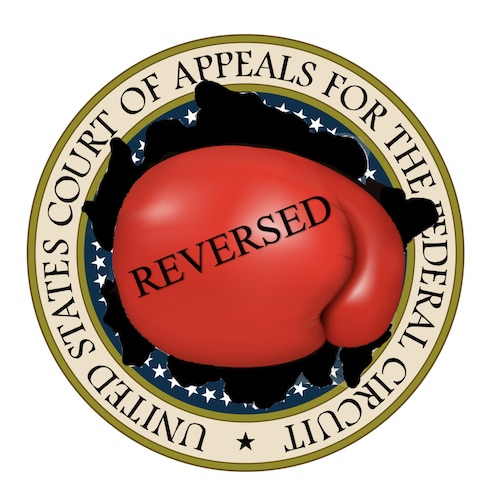Federal Circuit Says Narrowing Limitation Does Not Create a Contradiction Leading to Indefiniteness
“There is no difference material to the indefiniteness inquiry between a narrowing limitation recited in a dependent claim and the situation here, where the further narrowing limitation is recited in the independent claim itself.” – Federal Circuit opinion
The U.S. Court of Appeals for the Federal Circuit (CAFC) issued a precedential decision today reversing the Western District of Texas district court’s indefiniteness analysis and explaining that it improperly found a contradiction between two claim limitations to arrive at its indefiniteness holding.
Amperex Technology Limited filed an action seeking declaratory judgment of noninfringement and challenged the validity of certain claims of Maxell, Ltd.’s U.S. Patent No. 9,077,035 for a rechargeable lithium battery and Maxell asserted infringement of the patent in a separate action. The two actions were consolidated in the Western District of Texas and the court ultimately held that two of the “wherein” clauses of the sole independent claim 1 of the ‘035 patent contradicted one another. The combined contradictory clauses read: [c] “M1 represents at least one transition metal element selected from Co, Ni and Mn, . . . [f] wherein the content of Co in the transition metal M1 of the formulae (1) and (2) is from 30% by mole to 100% by mole.”
The district court concluded that “‘the plain language of the claim recites a contradiction,’ because the first limitation does not require the presence of cobalt (nickel or manganese suffices), so cobalt is ‘optional,’ whereas the second limitation does require cobalt,” according to the CAFC’s opinion.
On appeal, the CAFC said that the district court’s rationale that “[f]or an element to simultaneously be optional and required is a contradiction on its face” was incorrect because there is no contradiction in this particular case. The CAFC reasoned that the first limitation simply states one requirement of a transition metal under the claim—that it must be cobalt, nickel or manganese—while the second limitation states another requirement: if it is cobalt, it must be at a content of 30% to 100% by mole. The CAFC further explained:
“It makes no difference, at least here, that the two requirements are placed in separate limitations—rather than both appearing in limitation [c]. Such placement does not alter the logical point that it is possible to meet both requirements, meaning that there is no contradiction….
…That there were other ways of drafting the claim does not render the claim language contradictory or indefinite.”
Additionally, it is the ordinary role of dependent claims to add narrowing limitations to the independent claims they refer to, said the CAFC, and the district court’s suggestion that a limitation that narrows an earlier limitation “creates an invalidating contraction” would upend the ordinary practice for dependent claims. “[B]y statute, ‘[a] claim in dependent form shall be construed to incorporate by reference all the limitations of the claim to which it refers,’” wrote the court, citing 35 U.S.C. § 112.
The fact that limitation f is contained in independent claim 1 rather than in a dependent claim does not make the two limitations contradictory, said the CAFC. “There is no difference material to the indefiniteness inquiry between a narrowing limitation recited in a dependent claim and the situation here, where the further narrowing limitation is recited in the independent claim itself,” the opinion said.
Amperex attempted to argue that the claim language defining the M2 term, which requires that “M2 represents Mg and at least one metal element selected from the group consisting of Ti, Zr, Ge, Nb, Al, and Sn,” leads to uncertainty about the scope of M1 but the CAFC said this suggestion “in no way establishes a contradiction” and “lacks merit on its own terms.” The opnion said:
“The language defining M1 is clear, and it is not overridden by the specification or prosecution history. A relevant reader would not reasonably be confused into abandoning that clear meaning by the claim’s use of different language for defining M2.”
The CAFC thus reversed and remanded the district court’s decision for further proceedings consistent with the opinion.
Image Source: Deposit Photos
Image ID: 10042948
Image Author: almoond
Eileen McDermott
Eileen McDermott is the Editor-in-Chief of IPWatchdog.com. Eileen is a veteran IP and legal journalist, and no stranger to the intellectual property world, having held editorial and managerial positions at […see more]







